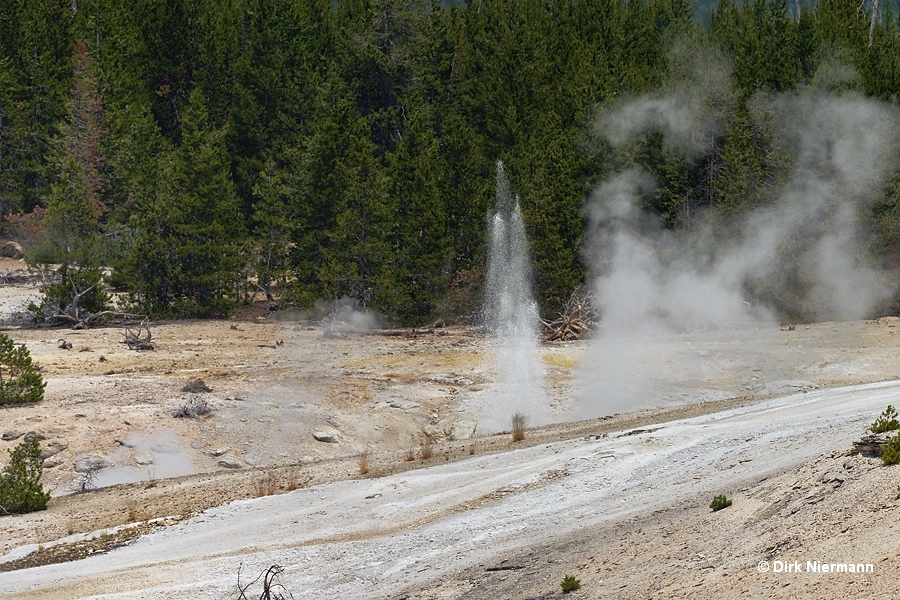Distant geysers on the flat of Norris Porcelain Basin
The flat of Norris Porcelain Basin between the Poreclain Springs and Pinwheel Geyser is home of a huge, rapidly varying number of geysers and perpetual spouters, whose sizes often are underestimated due to the large distance to the boardwalk. Some features on the flat are rather short-living, others are persisting for many years or decades, but overall the area exhibits high dynamics. All of these are reasons that only very few features in this area are officially named, such as Blue Geyser and Iris Spring. Others, like Feisty Geyser, did carry a name but disappeared or can no longer be positively identified.
Only few visitors take time to look out for the numerous geysers and perpetual spouters on the flat further beyond the Porcelain Springs. Even when many of these features do only exist for a short period of time, some of them are in terms of colors, frequency, or height of eruptions in no way inferior to other, far more prominent geysers. But the distance from the trail and steam do often impede the view.
Far out on the sinter flat the small Iris Spring and Blue Geyser are rare examples of features with a continuance over many decades. Both are mostly active during a disturbance. Prior to 1933 Iris Spring carried the name Apple Green Geyser for some time.
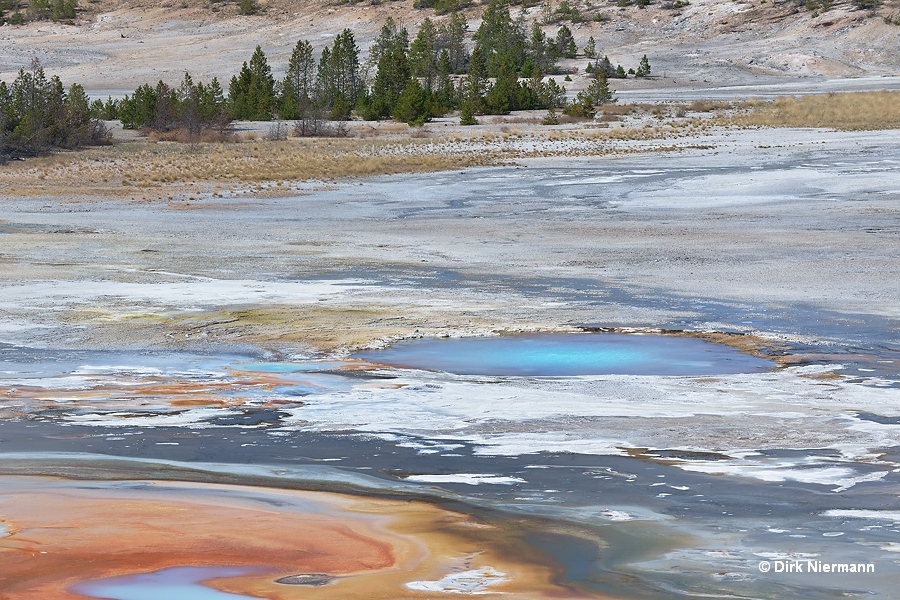
On July 17th, 2024, Blue Geyser was overflowing at a quite high temperature and apparently made several attempts to erupt, but couldn't get past some minor splashes. Unfortunately, I missed to capture the tallest one in a photo, so the next picture only shows the half as high runner-up.
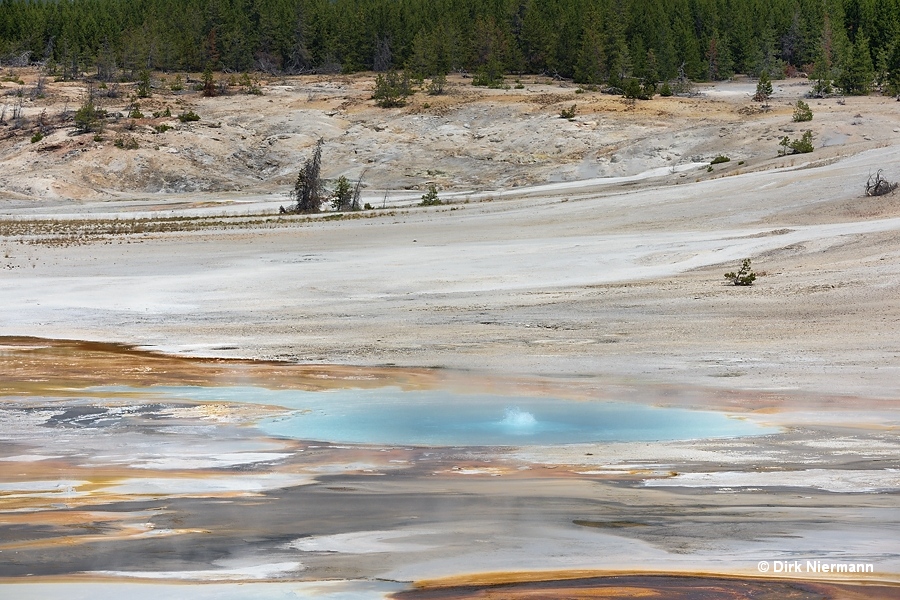
As with Blue Geyser, eruptions of Iris Spring are believed to be rare, but some may go unnoticed due to the low volume and height at a great distance.
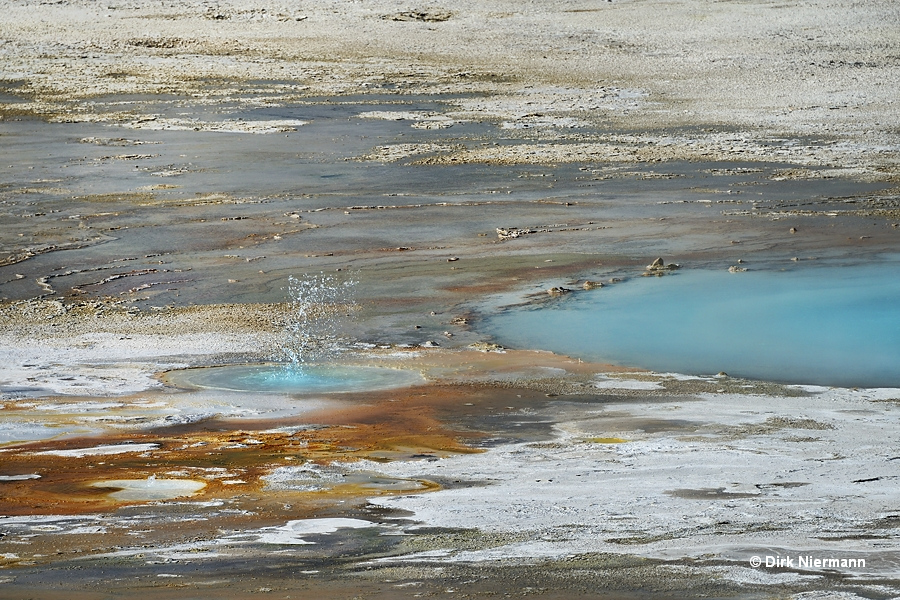
Approximately 35 m (115 ft) south-southwest of Blue Geyser a somewhat larger geyser played in 2017 at an interval around 20 minutes. The diameter of the pool was estimated to be 4 m (13 feet). Especially fascinating about this geyser were the bright colors and stunning color contrast to the surrounding. The deeply orange colored film of thermophilic microbes that covered the ground around the geyser pointed to a neutral through alkaline environment in this spot, as found with the Porcelain Springs. In contrast, in the northwestern section of the flat acidic conditions are prevailing, recognizable by different colors and sinter structures of local springs.
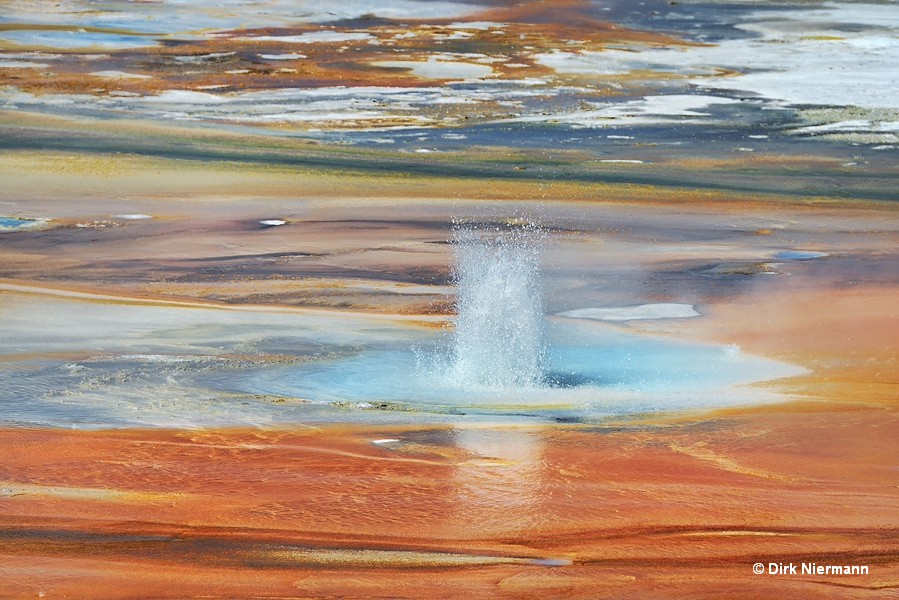
The pool visible in the pictures covered a crater with at least three different vents, perhaps more. One of them generated tiny eruptions simultaneously with the large ones.
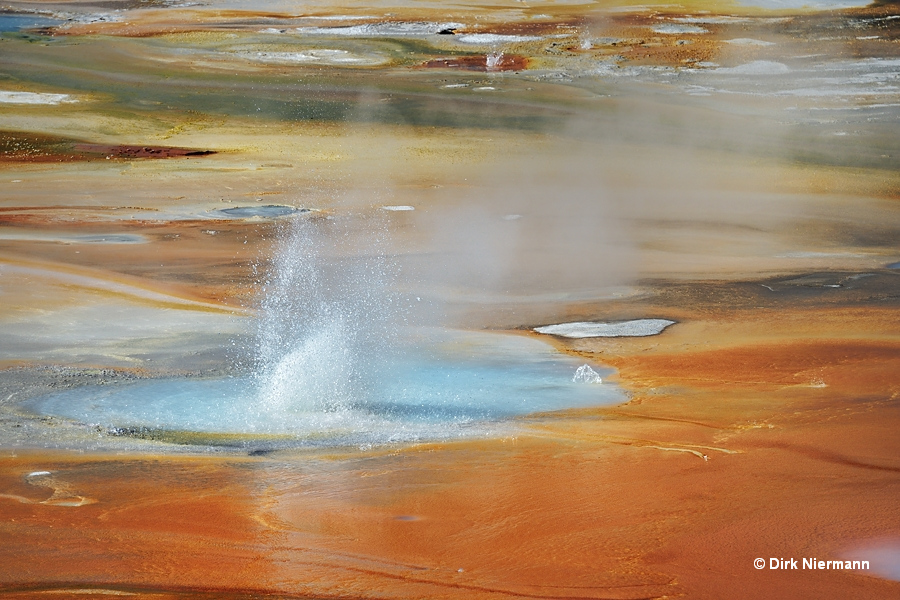
Located about 50 m (165 ft) southwest of Blue Geyser, the next two geysers were smaller, but they were playing together as a duo. The interval might have been around one hour. I'm quite sure that at least one or two of the geysers mentioned here do have unofficial names because some are in circulation for this section, such as Green Apple Cider Spring or Norris Geyser. But without the knowledge of experts a reliable assignment is impossible.
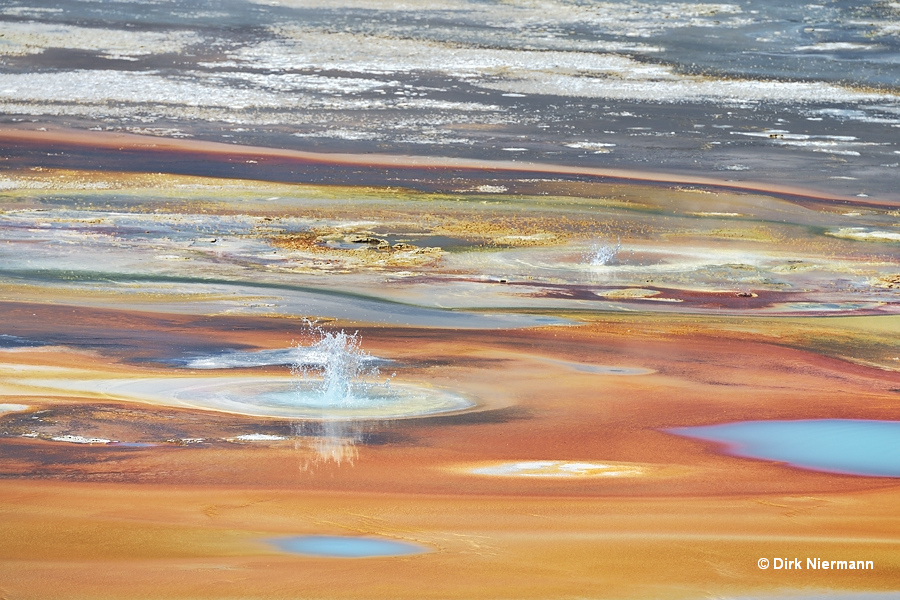
As expected, in 2024 some changes could be observed. The geyser on the lefthand side turned out to be dormant, while the one on the righthand side has gotten two simultaneously active neighbors, one to the southwest and one to the east. The cluster of vents on this small stage seems to represent one of the hot spots of geyser activity on the flat with a changing cast. Theater geysers, so to speak.
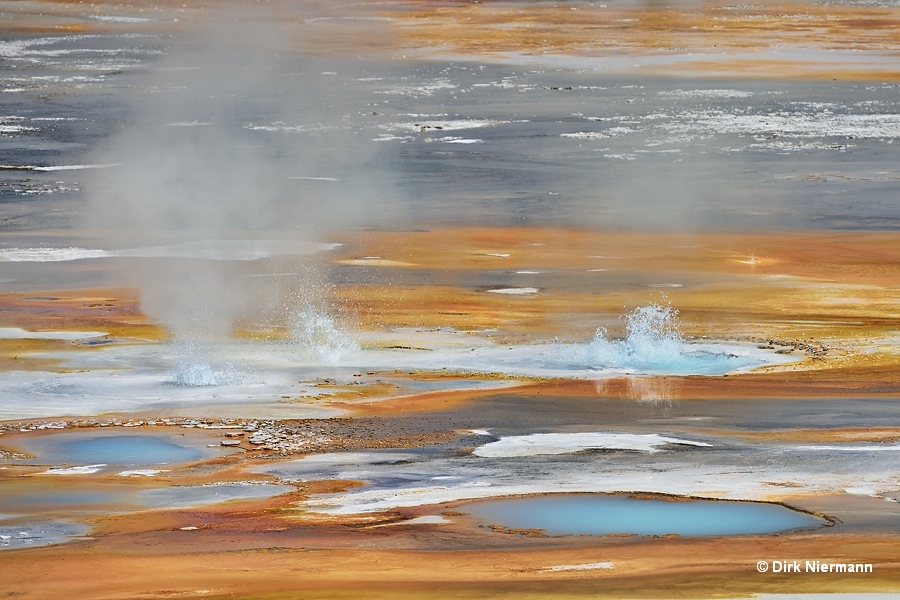
Proceeding from Blue Geyser approximately 30 m (100 ft) to the west, another noticeable geyser shows up, exhibiting a pool 6 m (20 feet) in diameter. In terms of appearance and colors it is completely different from the geysers described before because of its acidic nature. As an image from 1968 in the Yellowstone Digital Slide File and a map from 1929 reveal, this one is in place for a long time and bears the name Onyx Spring. According to the geyser researchers Donald E. White, Roderick A. Hutchinson, and Terry E.C. Keith, the spring is verified to be a geyser at least since 1957, and ranger Charles Phillips characterized it as a "snail geyser" in the Ranger Naturalists Manual from 1927. Apparently, already back then Onyx Spring wasn't the sprightliest one. The once black onyx color of the spring, probably caused by iron(II) sulfide, faded away and has been replaced by a light green, arising from an overlay of a yellow sulfur lining with opalescent blue water. On August 16th, 2017, Onyx Spring generated a few splashes a time with a height of approximately 50 cm (2 feet) at an interval around 20 minutes.
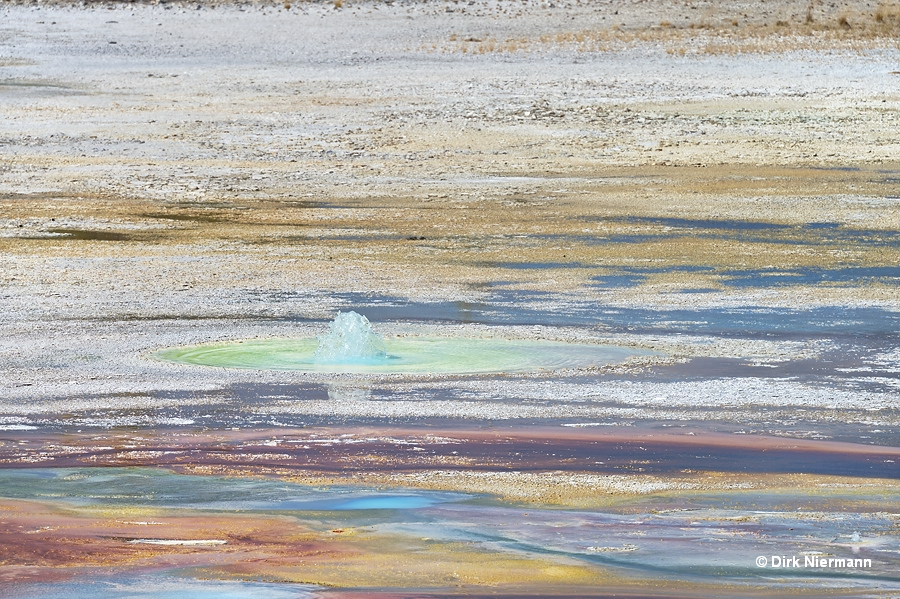
Onyx Spring was active in 2013, too, but looked a little bit different due to the missing sulfur lining. In right foreground in the next photo also the crater of the geyser south-southwest of Blue Geyser is to be seen, as well as on the outer lefthand side the back then dormant, dark pair of geysers southwest of Blue Geyser, all of which were discussed above.
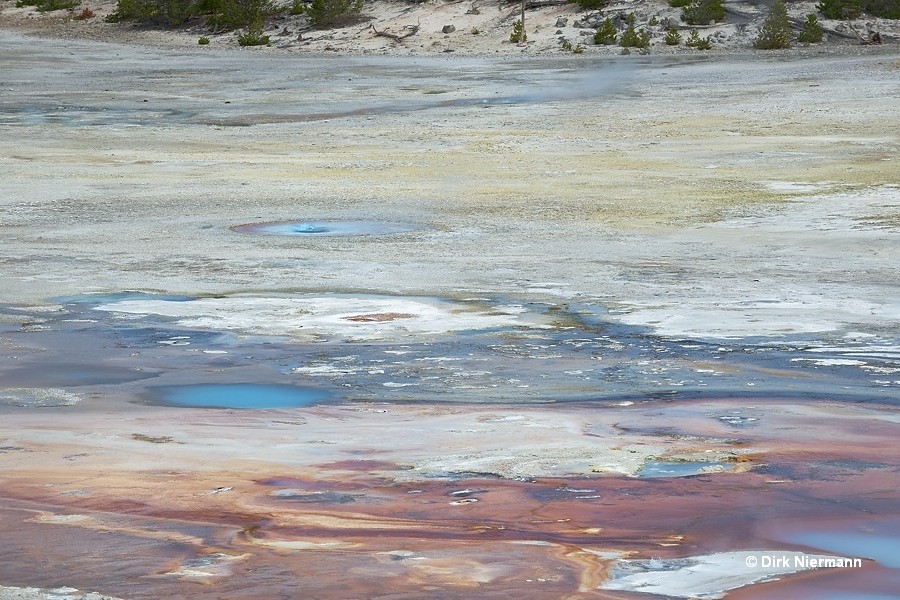
In a straight western direction from Blue Geyser after about 50 m (165 ft) another persistent pool is to be found. I caught it in eruption in July 2024, but the pool is already present in all my related photos from 2013 onwards. The interval was around 12 min at a duration of 6 min.
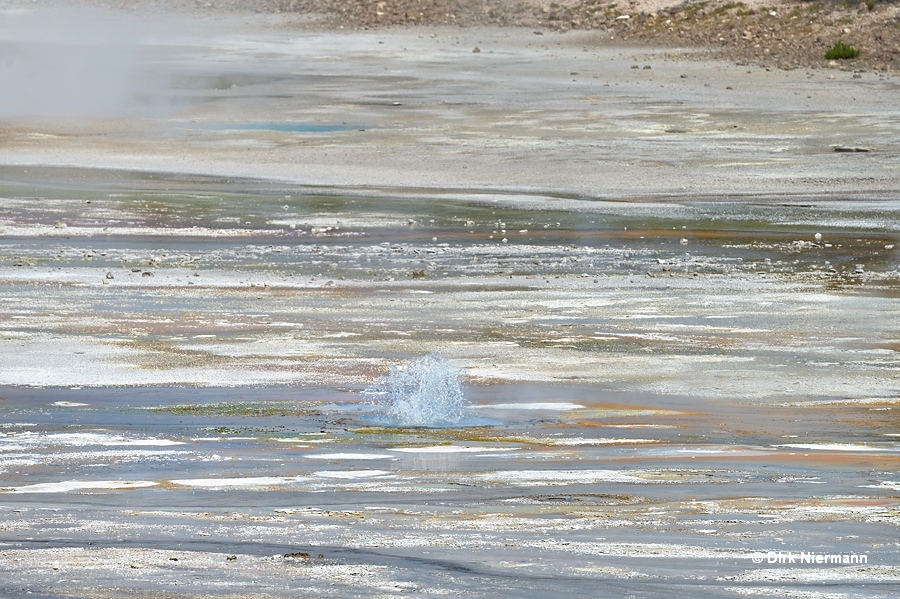
Another 15 m (50 ft) west-northwest of this geyser, seemingly not far away (due to the foreshortening of the perspective from the boardwalk) from where the runoff of Sieve Lake enters the flat, a further, somewhat larger geyser could be observed in 2017. The dome-shaped eruptions were not very high, but quite bulky. With the help of Google Maps the position could be estimated at 65 m (215 ft) west-northwest of Blue Geyser.
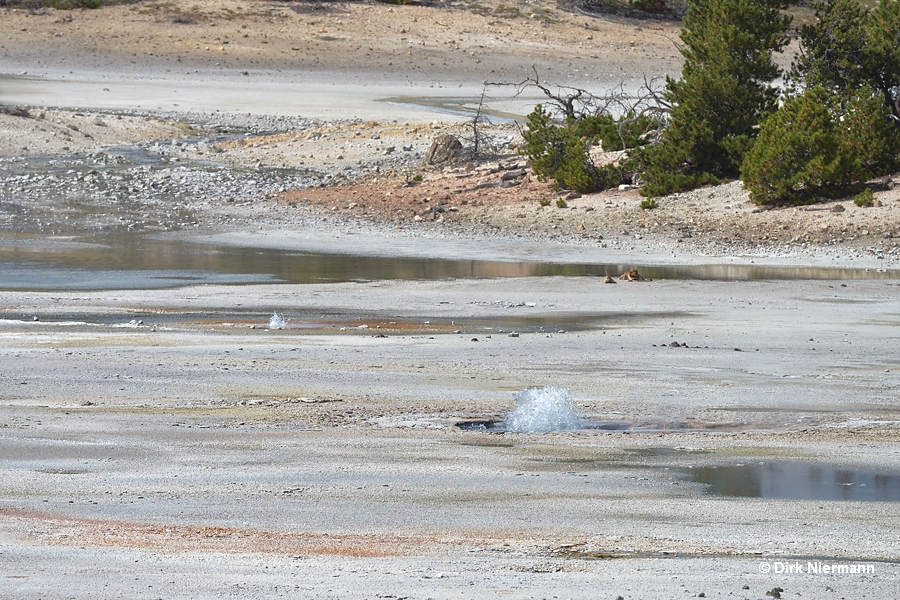
Amazingly, this geyser made an almost meteoric rise during the last years. In 2024 I could observe its large eruptions every hour at durations of approximately 30 minutes. At that time it was in terms of volume the largest frequently playing geyser at Porcelain Basin, in terms of height only surpassed by Collapsed Cave Geyser (see below). The pictures show by far not the highest eruptions I saw because throughout the morning huge volumes of steam veiled the bursts almost completely. It was not until the afternoon that I was able to catch a few eruptions more clearly. The one in the next picture was the only one, as far as I could detect, prefigured by a blue bubble. To some extent the bubble can still be guessed at the base of the water column.
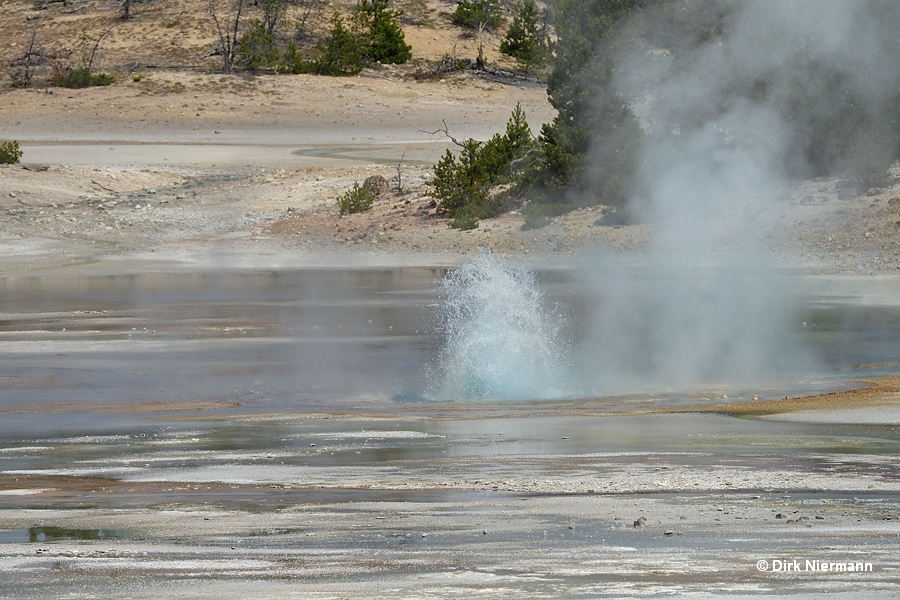
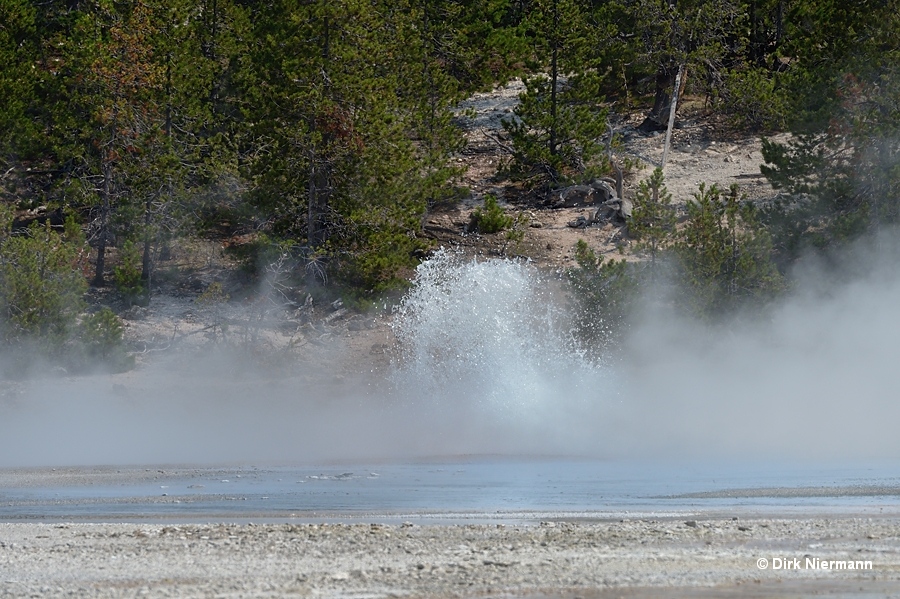
The number of tiny spouters throughout the flat of Porcelain Basin may reach a couple of dozen. In many cases, they are developing as quickly as they disappear. As an example the persistent feature NPBNN039 on a position north of Pinto Geyser and east of Pinwheel Geyser may be shown here. The salmon-colored outer ring is an often observed property of springs on the flat of Porcelain Basin and can be traced back to the presence of iron oxide at low concentrations.
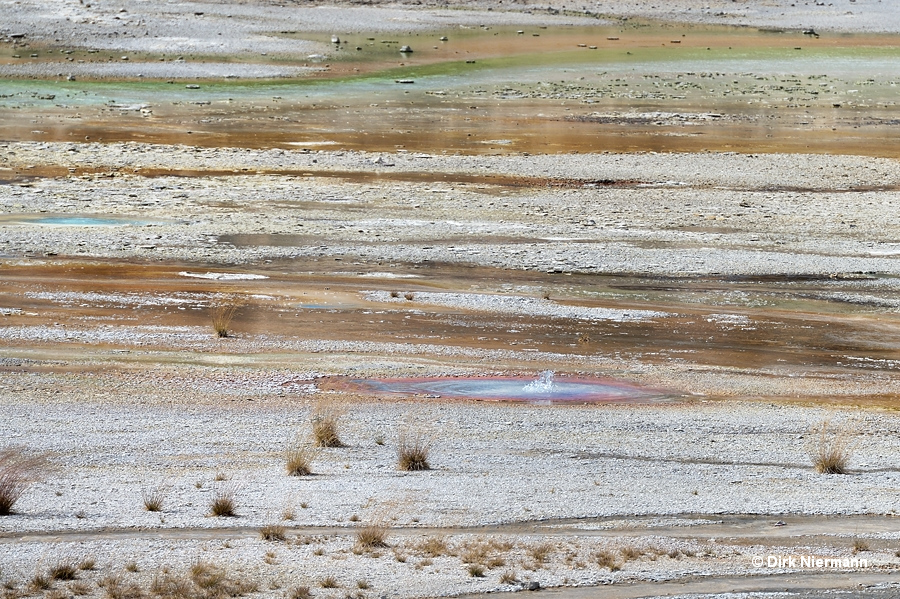
The northeast end of Porcelain Basin is marked by a range of low hills. On the slopes and on top of the hills further geysers and hot springs are to be found. A large bluish clouded pool, featuring a cave with a collapsed roof at its far side, is most eye-catching among them. The marginally visible spring is much larger than it appears, approximately as extended as Scummy Pool. The appearance of a collapsed cave could lead to a confusion with Collapsed Cave Geyser, but that one lies actually in a canyon beyond it and can't be spotted from the boardwalk (many thanks to Byron Taylor for the clarification).
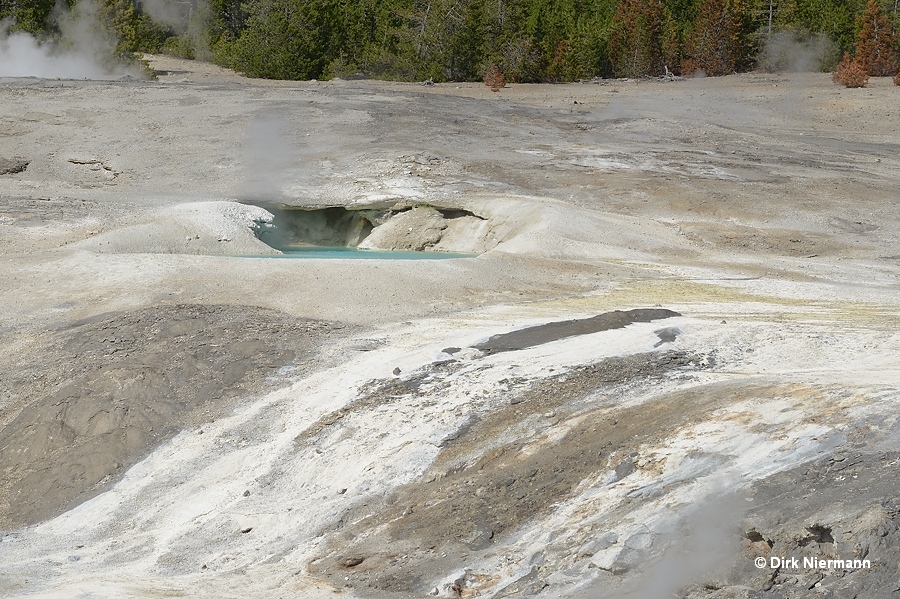
On the slope in front of this pool (at or just outside of the picture's right border) a small hydrothermal explosion took place on April 15th, 2024. It opened a crater 1-2 m (3-6 ft) in diameter. The explosion was preceded by about two years of more intense hot spring and geyser activity on the Porcelain Terrace.
With sharp eyes or the help of binoculars it is possible to observe geyser activity even at the remote northeastern corner of Porcelain Basin. However, the play of large geysers there is quite rare. Such an event took place in July 2024, when I observed two large geysers on the same day. Just on entering the lower boardwalks near Sunday Geyser my glance fell immediately on a vigorously erupting feature in front of the northeastern hills margining the Porcelain Flat. Most probably I saw Graceful Geyser, even when T. Scott Bryan warns in his book of the possibility to confuse this one with Wistful Geyser or Lonely Geyser, whose craters lie immediately adjacent to the northwest. The determination of an interval failed because during the 3.5 hours of continuous observation of this section of Porcelain Basin Graceful Geyser did not erupt again.
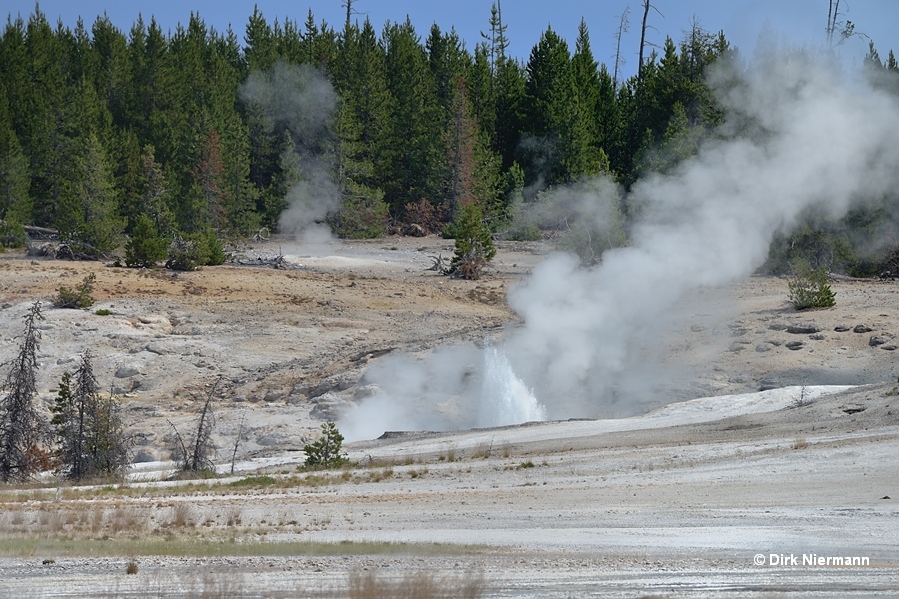
The second geyser became noticeable when I watched out for activity on the flat from a platform close to Swiss Cheese Pool. From the corners of my eye I discerned a slender fountain coming out of a little gully southeast of Graceful Geyser. Further observation revealed an interval around 25 min and a duration of less than one minute, as far as determinable when only the eruption peaks are visible. Some of those peaks were even considerably larger than the one shown in the picture. The position matches well with that of Collapsed Cave Geyser, but one can't be sure because the crater itself is obscured from legal observation points. It is unlikely but possible that a hitherto undescribed geyser was the source of the splashes. Mostly, eruptions of Collapsed Cave Geyser may be noticed as forceful steam emissions only.
